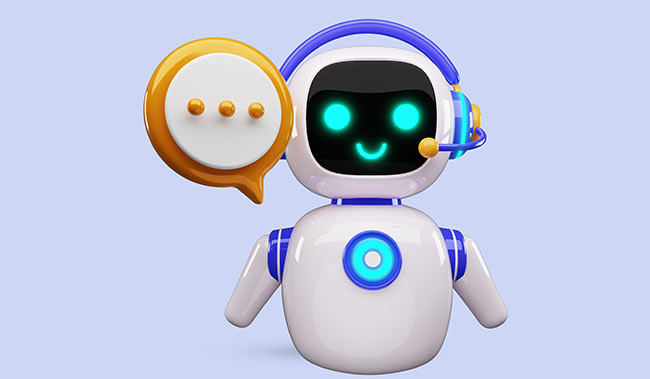18th September 2025

Jonathan Redsell at Netcall explores what a virtual agent is, virtual agents vs chatbots vs conversational agents, types of virtual agents, tips for creating a virtual agent and how to make a chatbot sound more human.
Virtual agents, such as chatbots, are transforming how businesses connect with customers and streamline operations.
At their best, these digital assistants create seamless experiences, answering questions instantly, processing requests 24/7 and freeing up your human team for more complex interactions. The potential is huge. From boosting customer satisfaction to reducing operational costs.
But, let’s be honest, we’ve all encountered bots that left us feeling frustrated rather than helped. The good news?
With the right approach, your bot can be one that users genuinely appreciate and maybe even prefer for certain tasks.
A virtual agent is a software application that uses artificial intelligence (AI), natural language processing (NLP) and robotic process automation (RPA) to provide information and respond to user requests. Most commonly, this technology takes the form of a chatbot.
Virtual agents are often used by organisations to support customer services, as they can handle routine questions, assist with simple requests and complete basic tasks.
By automating these interactions, businesses can free up human agents to focus on more complex or high-priority issues.
This not only helps improve efficiency but can also lead to quicker response times and a better overall customer experience.
While these terms are often used interchangeably, there are differences between virtual agents, chatbots and conversational agents in terms of their capabilities.
A chatbot is typically a rules-based tool designed to respond to specific keywords or pre-programmed inputs. If a recognised input is triggered, the chatbot will trigger a scripted response.
The nature of chatbots means that they are typically used for straightforward tasks like answering FAQs or responding to simple requests.
A virtual agent, on the other hand, is usually more advanced. It is a software application that uses technologies like AI, NLP and RPA to understand context, manage more complex queries and carry out automated tasks. Unlike chatbots, they are able to continuously improve.
Conversational agents refer to any system designed to engage in a dialogue with users, whether that is through a chatbot or virtual agent.
Conversational agents refer to any system designed to engage in a dialogue with users, whether that is through a chatbot or virtual agent.
Whether you call them virtual agents, virtual assistants or chatbots, these digital helpers are popping up everywhere. The big question is: How do you create one that delivers real value to both your users and your organisation?
Conversational agents refer to any system designed to engage in a dialogue with users, whether that is through a chatbot or virtual agent.
There’s no magic formula for the perfect virtual agent, but to get it right, we recommend starting by asking yourself some basic questions before you dive in:
The Value-Irritant Matrix from Bill Price (Amazon’s former Customer Service VP) can help identify the purpose of your virtual agent. It uses a grid format to highlight 4 use cases:
Before you build anything, look at what your existing data is telling you, from contact centre stats to website behaviour. By analysing your data, you can build a bot that has meaningful interactions with your customers.
It’s important to consider whether you’re interacting with people who might find technology intimidating. Keeping it simple is generally always good advice.
For voice bots, consider: Will regional accents be an issue? Do you need to offer multiple languages?
This is a big one. Before you promise your bot can change a customer’s address, make sure it can actually:
Too many chatbot projects crash and burn because someone promised functionality that the underlying systems couldn’t support. If integration isn’t possible, be honest and direct people to alternatives.
Once your bot is built:
Remember, your virtual agent is never really “done.” Keep an eye on what questions trip it up and where people abandon ship. Whether those abandonments are good (they got what they needed quickly) or bad (they gave up in frustration).
When done right, your virtual agent becomes an integral part of your customer service team. Think about it like you would a new employee:
Give it a clear job description, train it properly and equip it with the right tools. And don’t forget to review its performance regularly and help it to continually grow its knowledge and skills.
By focusing on solving real problems instead of just implementing flashy tech, your bot will become a valuable team member that both your customers and agents appreciate.
One trick for making a chatbot sound more human is through role-play!
Get two people in a room, one plays the customer trying to complete a specific task, the other plays the bot, limited to what the bot would actually know and be able to do.
For chatbots, use Teams or WhatsApp to simulate the experience. For voice bots, do it over the phone or sit back-to-back (no cheating with visual cues!).
Try this with different “types” of customers, including people who don’t know your business well. You’ll be amazed at how many edge cases and natural conversation flows you’ll discover.
Click to download the Guide: Getting Started with Bots
Reviewed by: Jo Robinson